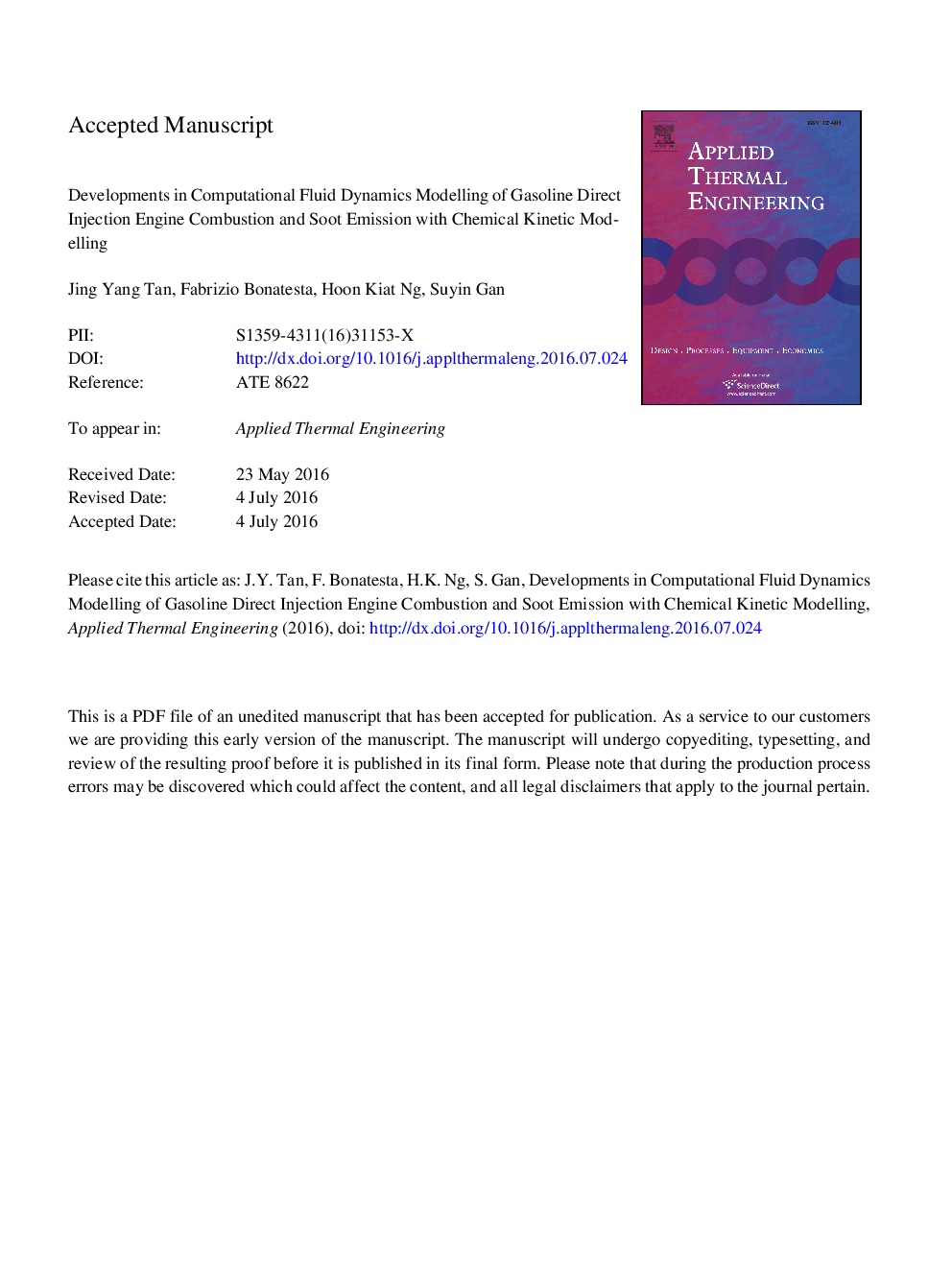| کد مقاله | کد نشریه | سال انتشار | مقاله انگلیسی | نسخه تمام متن |
|---|---|---|---|---|
| 7047404 | 1457121 | 2016 | 78 صفحه PDF | دانلود رایگان |
عنوان انگلیسی مقاله ISI
Developments in computational fluid dynamics modelling of gasoline direct injection engine combustion and soot emission with chemical kinetic modelling
ترجمه فارسی عنوان
تحولات در مدل سازی دینامیکی سیالات محاسباتی موتور احتراق مستقیم موتور تزریق بنزین و انتشار سیالات با مدل سازی سینتیکی شیمیایی
دانلود مقاله + سفارش ترجمه
دانلود مقاله ISI انگلیسی
رایگان برای ایرانیان
کلمات کلیدی
موضوعات مرتبط
مهندسی و علوم پایه
مهندسی شیمی
جریان سیال و فرایندهای انتقال
چکیده انگلیسی
Designed to inject gasoline fuel directly into the combustion chamber, gasoline direct injection (GDI) combustion systems are gaining popularity within the automotive industry. This is because GDI engines offer less pumping and heat losses, enhanced fuel economy and improved transient response. Nonetheless, the technology is often associated with the emission of ultra-fine particulate matter (PM) to the atmosphere. With increasingly stringent emission regulations, detailed understanding of PM formation within GDI engine configurations is very crucial. To complement the findings based on experimental and optical techniques, computational fluid dynamics (CFD) modelling has been widely utilized to study the in-cylinder physical and chemical events. The success of CFD simulations also requires an accurate representation of gasoline fuel kinetics. Set against this background, the present review reports on the recent developments in chemical kinetic modelling of gasoline fuels and CFD numerical studies for GDI engines emphasizing the combustion and emission stages. Regarding fuel kinetics, the use of primary reference fuel (PRF) and toluene reference fuel (TRF) mechanisms is evaluated. In addition, the current trend portrays a progression towards multi-component surrogate models to account for the complex mixture of practical fuels. It is however observed that many reaction mechanisms proposed in the literature are validated under homogeneous charge compression ignition (HCCI) engine conditions rather than GDI-related ones. CFD modelling of GDI engines typically covers the simulations of spray, mixture formation and combustion processes. Progress in combustion modelling for both homogeneous and stratified charge modes is discussed thoroughly. Still in its infancy, soot modelling studies for GDI engines are reviewed in which several soot models adapted are appraised. The majority of soot models have been previously applied in diesel combustion systems and flame configurations. Significant efforts are currently being carried out to improve the model predictions of soot emission from GDI engines.
ناشر
Database: Elsevier - ScienceDirect (ساینس دایرکت)
Journal: Applied Thermal Engineering - Volume 107, 25 August 2016, Pages 936-959
Journal: Applied Thermal Engineering - Volume 107, 25 August 2016, Pages 936-959
نویسندگان
Jing Yang Tan, Fabrizio Bonatesta, Hoon Kiat Ng, Suyin Gan,
